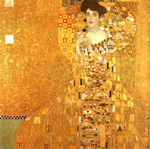
Gendered Interiorities
"'And long we try in vain to speak and act
Our hidden self, and what we say and do
Is eloquent, is well--but 'tis not true!" (ll.64-66).
Matthew Arnold's "The Buried Life" (1852)
Points
for Reflection
M. Arnold's "The Buried Life" (1852)
- does our narrator enjoy the witty bantering in which he and his love regularly engage?
- why have so many poets joined Arnold (ll.10-110) in suggesting that one can read another's soul in their eyes? Do you agree?
- by "men" (l.16), does Arnold mean humankind in general, or males in particular?
- what might Arnold mean by the claim that "the same heart beats in every human breast" (l.23)?
- according to the narrator, why (ll.30) does Fate hide the “river of our life” (l.39) from us?
- does Arnold identify in lines 59-66 a problem shared by the sexes?
- under what conditions do humans presumably, briefly, know themselves and speak truly (ll.77-90)?
- consider the careful wording of line ninety-six.
- does this poem upend or validate the notion that romantic love is a powerful force for good?
- what does this poem suggest about the scope of individual self-knowledge?
C. R. Rossetti's "Winter: My Secret" (1857; 1862)
- what is the dominant tone of this poem?
- why does the narrator withhold information from the auditor?
- how would it change the poem if we knew exactly what the narrator was keeping back?
C. P. Gilman’s “The Yellow Wall-Paper" (1892)
- what evidence do we find that the narrator's medical husband, John, values only what can be empirically verified or "rationally" explained?
- in what ways does John regulate the environment and behavior of his wife?
- does John succeed in his attempts to restrict his wife's artistic impulse?
- what evidence do we find that not only the narrator's physical but also her mental mobility is regulated by her husband? Identify moments where her thoughts and conclusions seem to mold themselves to what John expects/wants her to think.
- what about the design of the wallpaper so distracts the narrator?
- at what point do the narrator's imaginative observations about her surroundings transition from playful fantasy into problematic paranoia?
- why do the narrator's imaginative powers begin to work against her?
- does the narrator's perceptiveness concerning her husband and sister-in-law increase or decrease with the growth of her delusions?
- why does the narrator consider throwing herself out the window?
- what is the primary cause of the narrator's growing psychosis (what contemporaries would have likely termed "hysteria")?

Adele Bloch-Bauer 1 (1907)
Gustav Klimt
Dr. Paul Marchbanks
pmarchba@calpoly.edu
![]()
